The difference in feel and control of a rebuilt fork is amazing. After fixing our worn fork we could feel much better damping and a crispness to the action that had been missing. Replacing all the bushings gets all the tolerances much closer to like-new. Sure, there's wear on some parts that aren't economical to change, but you're shooting for no side play in the tubes, with the pistons and shims working like they should. If you plan to undertake an overhaul like this, make sure you get the tools needed to get the job done right.
Tech How-To
Dirt Rider has shown the ins and outs of disassembly and reassembly of the common cartridge fork designs and how to handle seal replacement and routine service. Here we focus on what to look for when inspecting the fork internals and how to know which parts are worn and need to be replaced. We used a Kayaba fork from an early '90s Kawasaki for many of the photos, since that type of open-cartridge fork is extremely common and is found on models that are probably long overdue for service by now. Specific problem areas of later-model sealed-cartridge Kayaba and Showa forks are included as well. Many suspension parts aren't available from the bike's manufacturer. For example, if you ask for new valve shims, the dealer parts book will most likely say you must buy the entire cartridge. Fortunately, the aftermarket has responded and these parts are available. All of the parts and tools used to refresh this old fork are from Race Tech. Since we aren't dealing with any specific brands here and this isn't a step-by-step rebuild, you'll certainly need a manual to address the bike you intend to service.Your first step is to check and record the suspension settings (so they can be reset later), then turn the adjusters all the way out before disassembly. In addition you see if the adjuster is still working. Normally adjusters should have click detents and a positive stop going in and out. If not, the fork cap or base valve must be replaced. Disassemble the fork as shown in the manual and drain the oil. There may be a different number of spring preload washers in each fork, so keep them with the proper spring. Inspect the parts for damage or wear. At this point the best indicator of problems is the used oil. If it is dark and black or it holds metal chips, there is trouble inside.
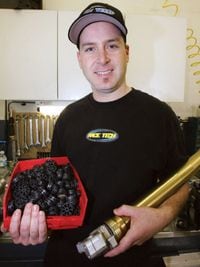
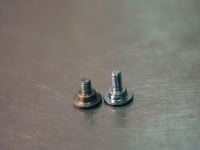
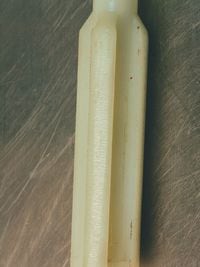
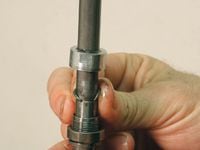
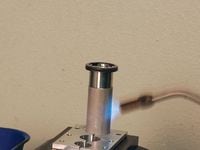
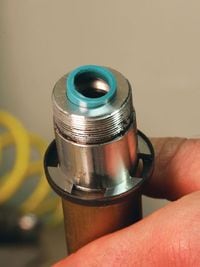
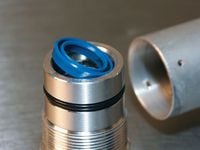
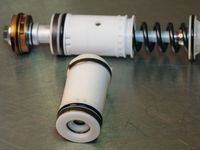
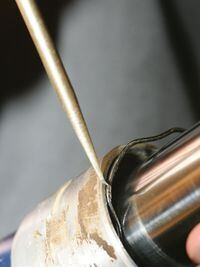
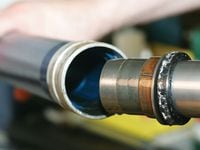
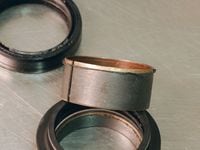
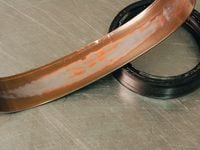
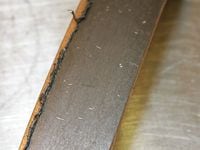
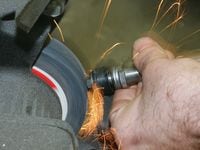
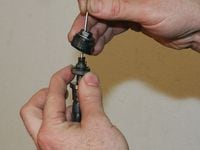
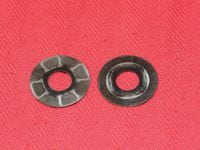
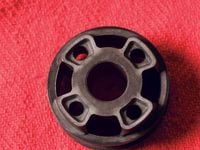
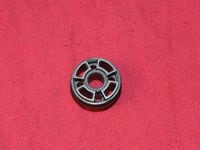
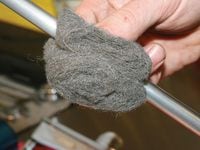
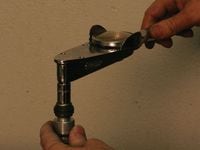
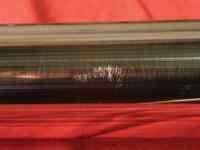

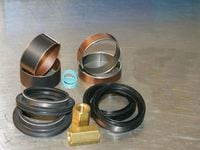
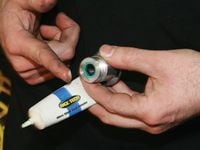
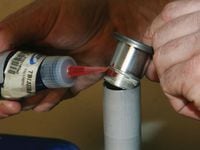
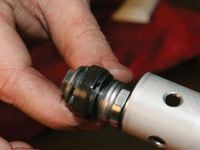
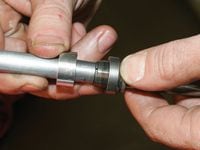
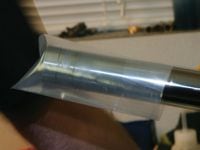
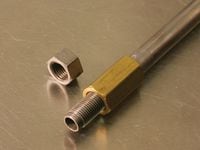
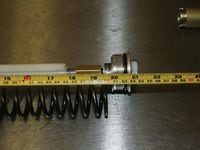
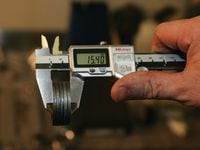
/cloudfront-us-east-1.images.arcpublishing.com/octane/WM3CKNM255E7NLISG3J5SOU63Y.jpg)
/cloudfront-us-east-1.images.arcpublishing.com/octane/XP5WDDR2AVGR3BF5S6TPCGYJ5A.jpg)
/cloudfront-us-east-1.images.arcpublishing.com/octane/7UAIG5GYLZH7LD72MKUYIHQYWU.jpg)
/cloudfront-us-east-1.images.arcpublishing.com/octane/6KXNSCIBK5BUNIJXUUELRO5W5Q.jpg)
/cloudfront-us-east-1.images.arcpublishing.com/octane/ZEQ7DSS7ZJCSLDAPECTSOAOGXI.jpg)
/cloudfront-us-east-1.images.arcpublishing.com/octane/OFSXJJ5PZFEZ5D5ZPMCFVHJUMA.jpg)
/cloudfront-us-east-1.images.arcpublishing.com/octane/N2JLNLG44VEKBMEPORRDTMX5A4.jpg)
/cloudfront-us-east-1.images.arcpublishing.com/octane/EOERU244ONEWVKQ7C24OHMRVWY.jpg)
/cloudfront-us-east-1.images.arcpublishing.com/octane/JF4T3ULTGNHTVEKSTNKLJ2IGKY.jpg)
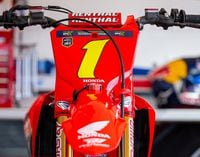
/cloudfront-us-east-1.images.arcpublishing.com/octane/FAOZEEEXFVA3ZK2PYMY3DHI2EQ.jpg)
/cloudfront-us-east-1.images.arcpublishing.com/octane/WCAUGYKA5FDZTB64FM36LJFMMM.jpg)
/cloudfront-us-east-1.images.arcpublishing.com/octane/EIDVOIN5IJDMRIVS2VNTOOBVSA.jpg)
/cloudfront-us-east-1.images.arcpublishing.com/octane/5BSWCTPONFB3DJFRPJ34STZMR4.jpg)
/cloudfront-us-east-1.images.arcpublishing.com/octane/KSERUHQUTNHLBCWKXS2R3TYZHI.jpg)
/cloudfront-us-east-1.images.arcpublishing.com/octane/GGOH2AQRSVHY5C5JLNEVYLB5SU.jpg)
/cloudfront-us-east-1.images.arcpublishing.com/octane/TJJEHV3ATZFFXHUYZABHXKE2DI.jpg)
/cloudfront-us-east-1.images.arcpublishing.com/octane/M7L5LNQ5JZENHNBTCHEIKZKD24.jpg)
/cloudfront-us-east-1.images.arcpublishing.com/octane/WIC4RXQ36BAXNIW6U4UJ3XDLKI.jpg)
/cloudfront-us-east-1.images.arcpublishing.com/octane/G64JLSXQBJFMVPTETPM4H353EU.jpg)
/cloudfront-us-east-1.images.arcpublishing.com/octane/ZBMLCCOSNJBIVAEC2OU6YSONKY.jpg)
/cloudfront-us-east-1.images.arcpublishing.com/octane/U7PDRXGEI5DCFJGSVGNLAHGIMA.jpg)
/cloudfront-us-east-1.images.arcpublishing.com/octane/S553MV5QAJFOHGOKYO7TJ6NGYA.jpg)
/cloudfront-us-east-1.images.arcpublishing.com/octane/62WLA7IMLVF2LIPTA4DGILHZIM.jpg)